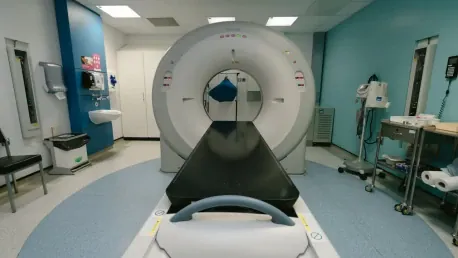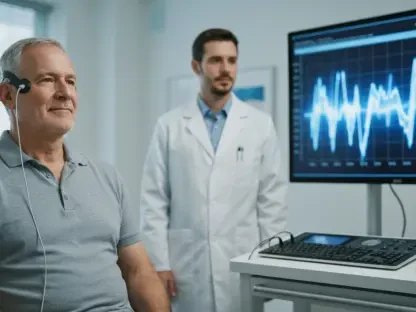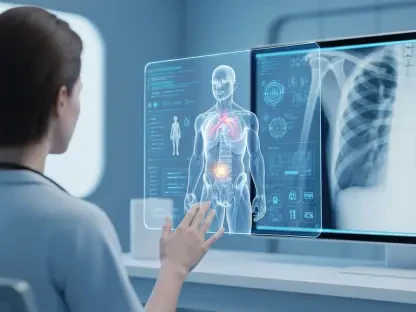Recent policy reforms in Washington are set to bring significant changes to the field of nuclear imaging, with the Society of Nuclear Medicine and Molecular Imaging (SNMMI) playing a crucial role in pushing for these advancements. These policies aim to address everything from reimbursement rates for radiopharmaceuticals to out-of-pocket costs for breast cancer screenings, reflecting a comprehensive effort to improve patient access and stimulate innovation in nuclear medicine. By examining these reforms, it becomes clear how the efforts of advocacy groups and legislative action may influence the future of medical imaging and patient care.
Improved Reimbursements for Radiopharmaceuticals
Addressing Inadequate Reimbursements and Its Consequences
For many years, radiopharmaceuticals, critical for various imaging procedures, were bundled with other supplies and received inadequate reimbursement, leading to significant issues, particularly in rural and minority areas. This reimbursement model deterred hospitals from providing these essential pharmaceuticals, diminishing patient access to state-of-the-art medical imaging. Recognizing this issue, the Centers for Medicare and Medicaid Services (CMS) recently implemented a cap on radiopharmaceutical payments at $630 per day. This landmark decision is expected to revolutionize patient access to high-value radiopharmaceuticals, allowing more hospitals to offer such treatments and diagnostics.
Stimulating Innovation and Industry Adjustment
The CMS’s reimbursement cap is not only a victory for patients but also a catalyst for innovation within the industry. With increased reimbursement rates, companies are likely to adjust their strategies to develop new and improved radiopharmaceuticals, knowing that hospitals will be more inclined to adopt these advancements. The improved financial landscape fosters a more conducive environment for research and development, ultimately leading to better diagnostic and treatment options in nuclear medicine. This shift in policy is poised to create a ripple effect, encouraging the entire sector to prioritize advancements and improve patient outcomes.
The Find It Early Act and Breast Cancer Screenings
Combatting Financial Barriers to Essential Imaging
Another critical legislative focus supported by SNMMI is the Find It Early Act, designed to eliminate out-of-pocket expenses for supplemental breast cancer screenings, which include advanced imaging techniques like PET and SPECT scans. Currently, financial constraints often leave women, especially those with dense breasts, unable to afford these advanced screenings, potentially compromising their health care. By aiming to remove these financial barriers, the act ensures that women have access to essential imaging that can detect breast cancer early, thereby improving survival rates.
Ensuring Comprehensive Care and Early Detection
The Find It Early Act represents a significant step toward ensuring comprehensive care by making advanced imaging financially accessible. Early detection of breast cancer through advanced imaging techniques is crucial for successful treatment outcomes. This legislative effort addresses a systemic issue within the healthcare system, where financial hurdles can prevent timely and critical diagnostics. By providing women with the necessary resources for early detection, the act not only enhances individual patient care but also contributes to broader public health goals by reducing breast cancer mortality rates.
Preserving Licensure for Nuclear Medicine Technologists
Maintaining Quality and Standards in Patient Care
One of the advocacy points highlighted by SNMMI involves preserving the licensure for nuclear medicine technologists, which is vital for maintaining high-quality patient care. The licensure ensures that these technologists are adequately trained and qualified to perform complex imaging procedures. Removing or reducing licensure requirements could result in a decline in the standards of nuclear imaging, potentially compromising patient safety and diagnostic accuracy. Hence, maintaining these licensure requirements is crucial for upholding the integrity of nuclear medicine practices.
Collaboration with the Department of Defense
In addition to advocating for licensure, SNMMI is collaborating with the Department of Defense to secure funding for nuclear medicine research, particularly focusing on neuroendocrine tumors. This collaboration highlights the importance of continuous research and development in advancing medical imaging techniques and treatments. Increased funding for research can lead to significant breakthroughs in understanding and treating complex conditions, ultimately benefitting patients through more effective and innovative therapies. The partnership with the Department of Defense underscores the multifaceted approach needed to advance the field of nuclear medicine.
Threats to Imaging Research Funding
Concerns Over Potential Funding Reductions
There is growing concern within the nuclear imaging community over potential funding reductions for imaging research through the National Institute of Biomedical Imaging and Bioengineering (NIBIB) amid discussions around reforms at the National Institutes of Health (NIH). Funding for imaging research is critical for the development of new imaging agents and technologies that can lead to significant advancements in medical diagnostics and treatments. The SNMMI has expressed fears that eliminating or reducing NIBIB funding could severely impact the progress being made in the field of nuclear imaging.
Advocating for Sustained Support and Progress
The potential reduction in funding underscores the essential role that governmental and institutional support plays in the continued progress of nuclear imaging research. Sustained funding from bodies like the NIBIB and NIH is necessary for nurturing innovation and maintaining the momentum of advancements in this critical area of healthcare. SNMMI’s advocacy efforts aim to raise awareness and support for the importance of continuous funding to ensure that cutting-edge research does not come to a standstill. Their proactive stance highlights the need for a concerted effort to secure the future of medical imaging and its potential benefits for patients.
Challenges of Medicare Reforms
Implications of Medicare Cuts for Nuclear Imaging Providers
Medicare reforms, particularly the 2025 Medicare Physician Fee Schedule, present another significant challenge for nuclear imaging providers, especially in rural areas. The SNMMI has highlighted that cuts to Medicare payments for physicians could have a detrimental effect on the availability and sustainability of imaging services. Since 2001, Medicare physician payments have decreased by 29%, while the operational costs for imaging centers have continued to rise. These financial pressures threaten the ability of imaging centers to continue offering services, thereby reducing patient access to necessary diagnostics.
Ensuring Access and Sustainability
Recent policy reforms in Washington are poised to bring transformative changes to the nuclear imaging field. The Society of Nuclear Medicine and Molecular Imaging (SNMMI) is instrumental in advocating for these developments. These new policies address a range of important issues, including reimbursement rates for radiopharmaceuticals and out-of-pocket costs for breast cancer screenings. The overarching aim is to improve patient access, foster innovation, and enhance the overall landscape of nuclear medicine.
By exploring the specifics of these reforms, it becomes evident how advocacy groups and legislative efforts can shape the future of medical imaging and patient care. These changes promise to not only make advanced imaging technologies more accessible but also encourage the continued development of new diagnostic and therapeutic techniques. The efforts of SNMMI and similar organizations highlight the critical role that focused advocacy and sound policy-making play in advancing healthcare. Ultimately, the reforms initiated in Washington may lead to significant improvements in patient outcomes and the overall efficacy of nuclear medicine.









